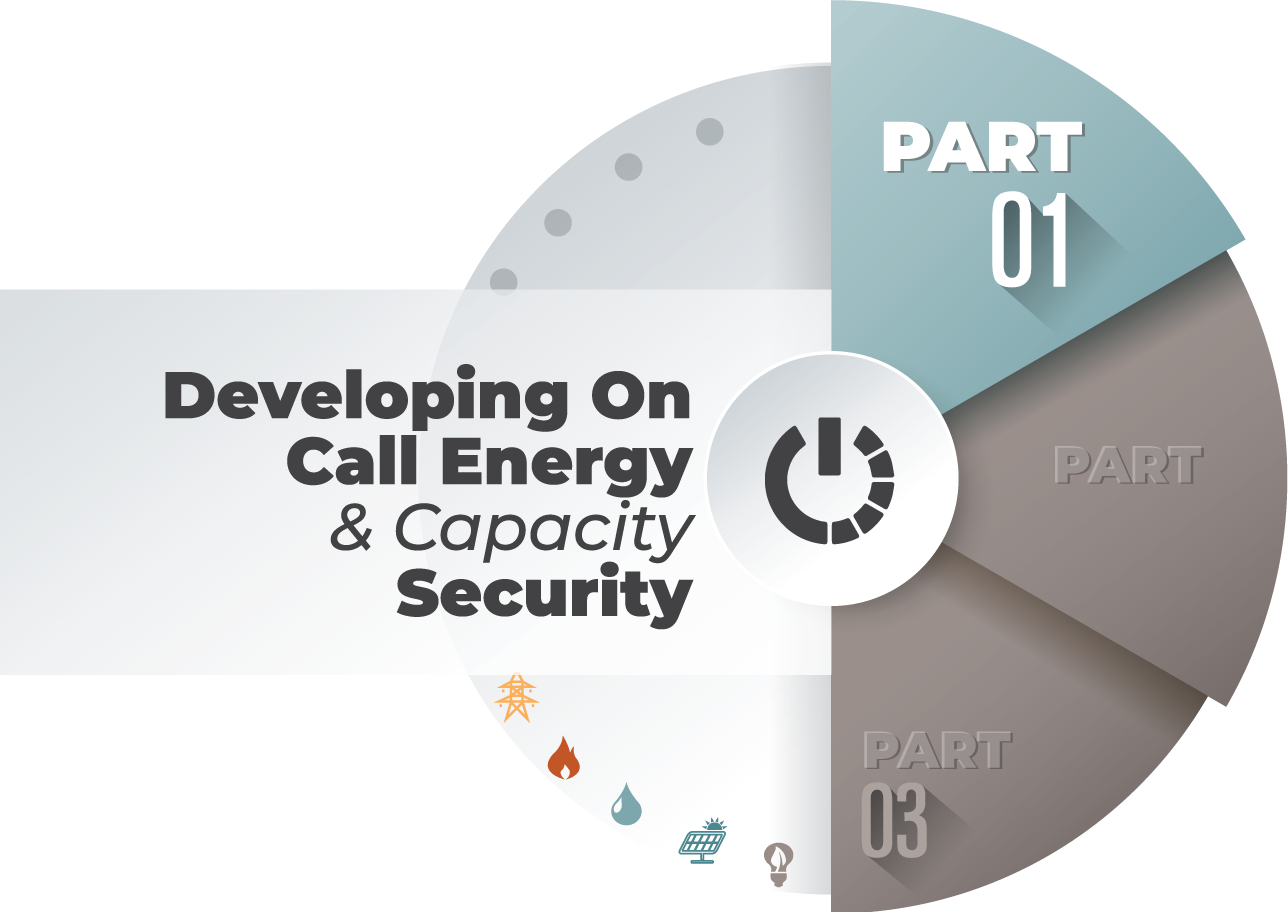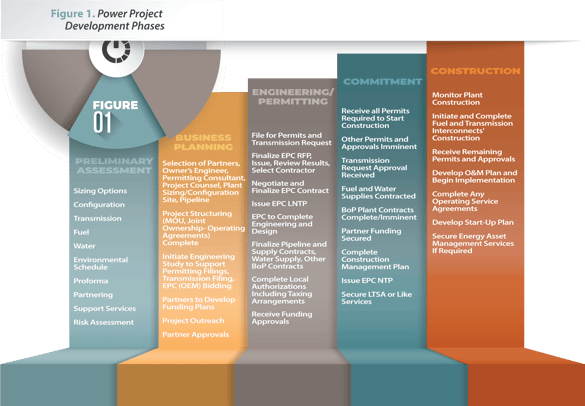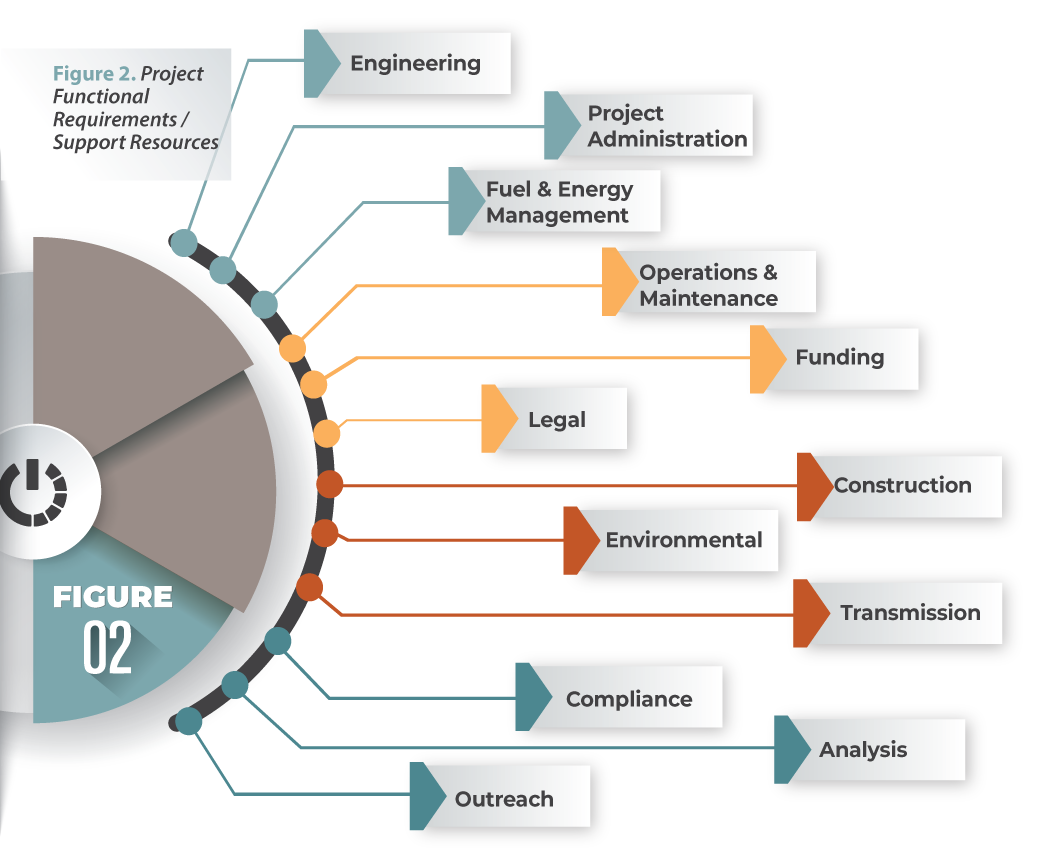- Home
- Services
- Hi-Line Engineering
- About
- Careers
- Contact
- Requests For Proposals
Developing On Call Energy & Capacity Security - Part 1
by GDS Associates, Inc | April 20, 2023 |
 INTRODUCTION
INTRODUCTION
Supply chain reliability is the focus today across the board in all business sectors, including the power sector. This is especially true for electric utilities that have the obligation to serve. According to Berkley Labs, the reliability of the U.S. electric power system is critical to the nation’s economic vitality and the well-being of society. Today, that reliability is being challenged, as the infrastructure ages and as incidences of severe weather and other threats to the system increase. The ongoing retirement of fossil fuel generating capacity and the push for more electrification adds to this challenge and further drives the need for reliable dispatchable generation.
Reliability and resiliency are paramount in the power industry and equate to supply security. With the increasing penetration of renewables and the intermittency of their generation, the consequential risks of an uncertain energy and lower credited capacity (than nameplate) are borne by the electric utilities. To help ameliorate this risk, reliable and readily available generation supply is needed. Although battery energy storage systems have a role in helping manage this risk, their operating duration is limited.
To secure supply deliverability, a 24/7 firm call option is required. This round the clock on call energy and credited nameplate capacity can be met with proven state of the art, clean and highly efficient natural gas fired generation. When coupled with black start capability, air cooling technology, and appropriate geographic siting, its resiliency is bolstered. Like renewables, this secure supply option can be acquired through owner developed projects or through virtual ownership of a dedicated resource via a life of project offtake agreement. Either structure can be accomplished on a sole basis or on a joint basis, meaning joint owners or joint offtakers. Joint arrangements can be easily structured and provide all parties benefits including economies of scale.
However, not all electric utility organizations are sufficiently resourced to develop their own power project or to accomplish the same through captive project offtake agreements. That being said, there are industry proven power project development and asset management processes that can be utilized by these organizations to effectively develop, own, and manage generation resources or to do the same via a power purchase agreement.
This article is the first of a three-part series that walks through these processes and provides frameworks that can be adapted and implemented to match each organization’s power project needs and managerial resource situation. This first article will walk through the phases of project development and required implementation functions. The next two articles will detail the requirements of both sole and joint project structures for either ownership or dedicated power purchase offtake agreements.
PROJECT DEVELOPMENT PHASES
Power project development can be segmented into a handful of progress and commitment phases (Figure 1). These phases can be classified as follows:
1. PRELIMINARY ASSESSMENT
2. BUSINESS PLANNING
3. ENGINEERING & PERMITTING
4. COMMITMENT
5. CONSTRUCTION
Of utmost importance in any project development is the effective management of the level of dollar commitment required to keep a project on schedule. The preferred approach for project developers is to align spending commitments with the decision milestones and timing of ultimately issuing a notice to proceed (NTP) for the project’s full construction release and equipment commitments. A risk management approach to limit an owner’s financial exposure should be implemented so that the project developer can effectively manage material issues as they occur (and they will) during the project’s development.

This risk can be managed by issuing engineering, procurement, and construction (EPC) contract limited notices to proceed, or LNTPs. The most effective LNTPs are clearly and specifically defined in scope and dollars, thereby restricting the owner’s exposure to a known dollar limit during each incremental LNTP. Structuring these LNTPs effectively occurs by negotiating with the EPC counterparty during the EPC contract or developer agreement process and can serve as active risk management tools. The milestones should be set such that the construction and equipment delivery schedules are kept on track without issuing a full release under a notice to proceed, and thereby, limiting the utility’s exposure. This same concept / approach can also be accomplished under an offtake agreement.
Once the project’s first phase – PRELIMINARY ASSESSMENT – has been successfully completed, meaning that the project is feasible, the next phase – BUSINESS PLANNING – requires the selection and addition of the talent resources that are needed to support the project owner (or offtaker) in the development of the project. It is critical for these acquired resources to meld the development activities so that the project can be appropriately commercialized to meet its goals. Focusing on the term “development” when securing the talent resource – for example, a “development engineer” – will ensure the right t and will appropriately match the skill set with the need. Owner directives during the implementation of project contracts must not conflict with the project’s division of responsibilities. This is necessary to prevent shifting of liability from the EPC contractor / developer to the owner / offtaker.
PROJECT DEVELOPMENT / IMPLEMENTATION FUNCTIONS
Power project development includes a range of implementation functions that must be planned, staffed, and executed successfully to meet the cost, schedule, and performance requirements of the designated power project. These functions require a range of technical and commercial talents that must be in place to support the execution of each function during the development of the project and in different degrees during the project’s eventual operation.
Depending on the utility’s organizational resources, these talents can exist inhouse, can be acquired through external resources, or a mix of the two. These functions include a project development lead, engineering, construction, project administration, environmental, fuel and energy management, transmission, operations and maintenance, compliance, funding, analysis, legal, and outreach (Figure 2).

The project’s development strategy will determine the organizational approach that will be required to implement the project. The resulting approach will generally include the same types of technical and commercial talent, but the level of engagement of these resources will differ. In the next two articles, Parts 2 and 3, there will be further discussion of the various functional requirements in addition to detailing the next step requirements for both sole or joint project structures for either ownership or dedicated offtake agreements.
For more information or to comment on this article, please contact:
 Paul Wielgus, Managing Director
Paul Wielgus, Managing Director
GDS Associates, Inc. - Marietta, GA
770.799.2461 or paul.wielgus@gdsassociates.com
GET OUR NEWSLETTER
RECENT POSTS
- Why MOD-026-2 Matters: Raising the Bar for Generator and IBR Modeling Reliability
- Exploring the 2026-2028 Reliability Standards Development Plan
- Blackstart Resource Availability During Extreme Cold Weather Conditions
- DOE Pushes FERC to Accelerate Large Load Grid Access
- Building a Cyber-Aware Workforce in the Utility Sector
Archives
- December 2015 (8)
- June 2025 (7)
- January 2016 (6)
- July 2016 (6)
- March 2021 (6)
- May 2022 (6)
- August 2020 (5)
- March 2015 (4)
- January 2019 (4)
- June 2019 (4)
- August 2019 (4)
- February 2020 (4)
- May 2020 (4)
- June 2020 (4)
- December 2020 (4)
- July 2021 (4)
- October 2021 (4)
- April 2024 (4)
- December 2024 (4)
- May 2025 (4)
- April 2015 (3)
- August 2016 (3)
- February 2017 (3)
- July 2017 (3)
- February 2018 (3)
- February 2019 (3)
- November 2019 (3)
- March 2020 (3)
- April 2020 (3)
- September 2021 (3)
- December 2021 (3)
- August 2022 (3)
- December 2022 (3)
- April 2023 (3)
- July 2023 (3)
- December 2023 (3)
- September 2024 (3)
- October 2025 (3)
- December 2025 (3)
- May 2014 (2)
- February 2016 (2)
- March 2016 (2)
- September 2016 (2)
- November 2016 (2)
- January 2017 (2)
- July 2018 (2)
- November 2018 (2)
- March 2019 (2)
- May 2019 (2)
- July 2020 (2)
- September 2020 (2)
- April 2021 (2)
- August 2021 (2)
- October 2024 (2)
- September 2025 (2)
- February 2014 (1)
- April 2014 (1)
- July 2014 (1)
- August 2014 (1)
- November 2014 (1)
- February 2015 (1)
- May 2015 (1)
- June 2015 (1)
- November 2015 (1)
- October 2016 (1)
- December 2016 (1)
- October 2018 (1)
- December 2018 (1)
- April 2019 (1)
- July 2019 (1)
- September 2019 (1)
- October 2020 (1)
- November 2020 (1)
- February 2021 (1)
- April 2022 (1)
- July 2022 (1)
- October 2022 (1)
- August 2023 (1)
- October 2023 (1)
- July 2025 (1)
- November 2025 (1)
Categories
- Newsletter - TransActions (85)
- News (78)
- Employee Spotlight (35)
- Energy Use & Efficiency (28)
- Energy, Reliability, and Security (17)
- Other Specialized Services (11)
- Environment & Safety (10)
- Power Supply (8)
- Transmission (8)
- NERC (7)
- Utility Rates (7)
- Cyber Security (5)
- Energy Supply (4)
- Hi-Line: Utility Distribution Services (4)
- Battery Energy Storage (3)
- Uncategorized (2)
- Agriculture (1)
- Hi-Line: Seminars & Testing (1)